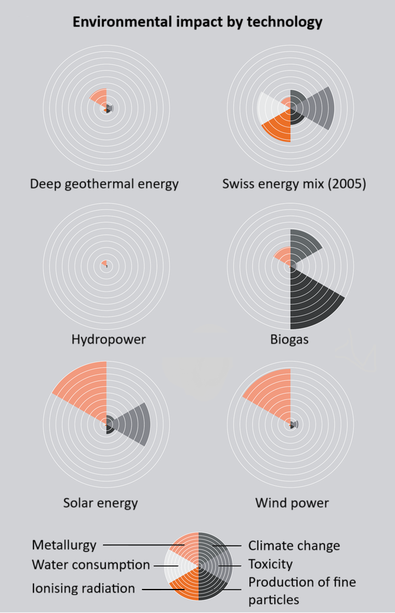Advantages of Deep Geothermal Energy – Renewable Base Load Energy
The Earth Is a Huge Heat Reservoir that Is Constantly Renewing Itself through the Natural Decay of Radioactive Elements in the Crust.
In principle, geothermal energy would be sufficient to sustainably cover global energy needs. Deep geothermal energy is a renewable energy source that can provide electricity and heat indefinitely. Regardless of the amount of energy extracted, the earth's interior continuously generates new energy, making the use of geothermal energy an ideal base load energy supplement to the other ‘renewables’ such as wind and solar.
In contrast, other known renewable energy sources that similarly generate rare base load energy, have only a limited potential for expansion (hydroelectric power) or are limited due to the available resources (biomass). Because deep geothermal energy can cover a significant portion of energy demand on a constant basis without producing neither emissions or waste, this energy source is an important cornerstone of the Swiss government's Energy Strategy 2050.

Sustainable Energy Source
Deep geothermal energy provides valuable, renewable base load energy around the clock, regardless of the time of day or climate. It is also indigenous and contributes to local value creation, for example by adding to the reuse of hot water in agriculture, industry or tourism.
Deep geothermal energy also performs very well with regards to its environmental impact. This is the conclusion of a comprehensive report by experts from the Centre for Technology Assessment (TA-SWISS) in 2014. In terms of climate impact and metal consumption, deep geothermal energy is second only to hydropower among renewable energy sources, especially when the environmental impact assessment includes not only the operating phase but also the construction of the plant in question.

Enormous Theoretical Potential for Electricity and Heat Production
While solar, wind and hydroelectric power in Switzerland have relatively limited energy potential, comparatively, the theoretical potential of deep geothermal energy is huge. However, this potential must first be tapped using new and innovative technologies.

Overview of the Advantages of Deep Geothermal Energy
- Environmentally friendly
- Renewable
- Locally sourced
- Available around the clock
